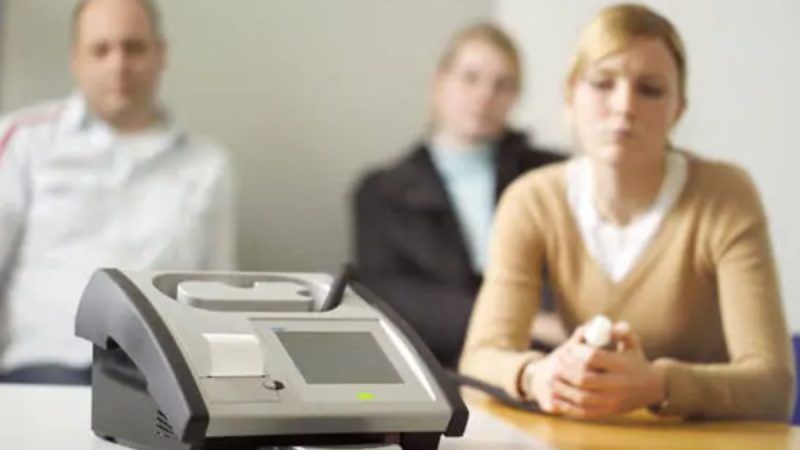This Chronicle of Sloppy Alcohol Breath Testing Highlights the Hidden Problems With Supposedly Scientific Forensic Evidence
Even when a technology is valid in theory, haphazard methods can lead to wrongful convictions.

In principle, machines that analyze drivers' breath can accurately measure the concentration of alcohol in their blood. But as The New York Times shows in an eye-opening exposé, that depends on using properly maintained and calibrated machines running error-free software. When police neglect those factors, innocent people can be convicted of driving under the influence. "Judges in Massachusetts and New Jersey have thrown out more than 30,000 breath tests in the past 12 months alone, largely because of human errors and lax governmental oversight," the Times reports. "Across the country, thousands of other tests also have been invalidated in recent years."
Here are some striking examples of faulty breath-test evidence used in DUI cases, as described by the Times:
- Massachusetts, which in recent years has been plagued by fraud at the state's forensic laboratory, used Alcotest 9510 machines that are supposed to generate error messages when two methods of testing blood alcohol concentration arrive at contradictory results. "Instead," the Times says, "the devices printed a result"—a problem that the machine's manufacturer, Dräger, attributed to a programming error it says has been corrected. In addition, the crime lab "lacked a written procedure to set up and test machines," and "the lab had hidden records of hundreds of failed calibrations." Those problems eventually led to court orders throwing out more than 36,000 test results and prohibiting the state from using breath machines until the program has been reformed and accredited.
- In 2010, Ilmar Paegle, the new head of the Washington, D.C., breath testing program, discovered that the District's Intoxilyzer machines were "generating results that were 20 percent to 40 percent too high." Paegle reported that his predecessor, Kelvin King, who was in charge of the program for 14 years, "had routinely entered incorrect data that miscalibrated the machines." The program also had been using test chemicals "so old that they had lost their potency." The city has notified defendants about the miscalibration issue in just 350 DUI cases spanning 18 months, but more than 700 other DUI defendants pleaded guilty during that period based on the assumption that their breath test results would lead to convictions.
- Washington state replaced its old breath testing equipment in 2009 with Dräger's Alcotest 9510, even though the company said the machines were "not yet ready for implementation." A state toxicologist recommended that "we throw caution to the wind and proceed without paying up front for an independent evaluation." In 2015, consultants hired by a defense attorney concluded that the Alcotest 9510 was "not a sophisticated scientific measurement instrument" and "does not adhere to even basic standards of measurement." The problems included programming that could yield results rounded up to cross the 0.08 percent DUI threshold and the state's decision to forgo a sensor that measures breath temperature, which can skew test results.
- When Colorado bought 160 new Intoxilyzer 9000 machines from CMI in 2013, it was in a hurry to get them up and running. A state lab technician later testified that "records were faked to show that he had calibrated dozens of instruments that he had never touched." The lab also "summoned assistants, including an intern, a CMI lawyer and a sales manager, to help." The lab's former science director "said in a sworn affidavit that her digital signature had been used without her knowledge on documents certifying that the Intoxilyzers were reliable," and "the lab kept using her signature after she left for another job." A judge in one case concluded that the lab had decided to "consciously disregard truth and accuracy." Defense lawyers in dozens of other cases are now challenging the test results used to convict their clients.
- In New Jersey, the Times reports, "more than 13,000 people were found guilty based on breath tests from machines that hadn't been properly set up." In 2007 the New Jersey Supreme Court let defense attorneys hire experts who found "thousands of programming errors" in the software for Dräger's Alcotest 7110. "Dräger said it quickly fixed the problems," the Times says, "but the state never rolled out the software update."
- Several states, including Florida, Ohio, Oregon, and Mississippi, are using a machine, the Intoxilyzer 8000, that Vermont deemed "unsatisfactory" in 2005, noting that it generated inaccurate results in "almost every test."
In addition to highlighting the potential for hidden problems (including fraud) with forensic evidence presented as scientifically infallible, the experience with alcohol breath testing is a cautionary tale for legislators, police, and prosecutors as they decide how to deal with marijuana-impaired driving. With alcohol, there is a firm scientific basis both for measuring blood levels with breath tests and for correlating them with impairment. Neither is true for THC. The best that breath, saliva, or even blood tests can do is confirm that a driver has consumed cannabis. They cannot show whether he was impaired by cannabis while he was driving.
In cases where there is independent evidence of impairment, a positive result for THC can suggest the cause. Even when tests are used for that limited purpose, and even when the technology has been validated, it is not safe to assume results are accurate in practice.
You might think that police and prosecutors have a strong incentive to make sure the evidence on which they rely can withstand scrutiny, given the consequences once sloppy methods are exposed. But that incentive is often overridden by short-term expediency, as demonstrated by the continued use of notoriously unreliable drug field tests. This chronicle of laziness, incompetence, and outright fraud in alcohol breath testing underlines that point.


Show Comments (51)